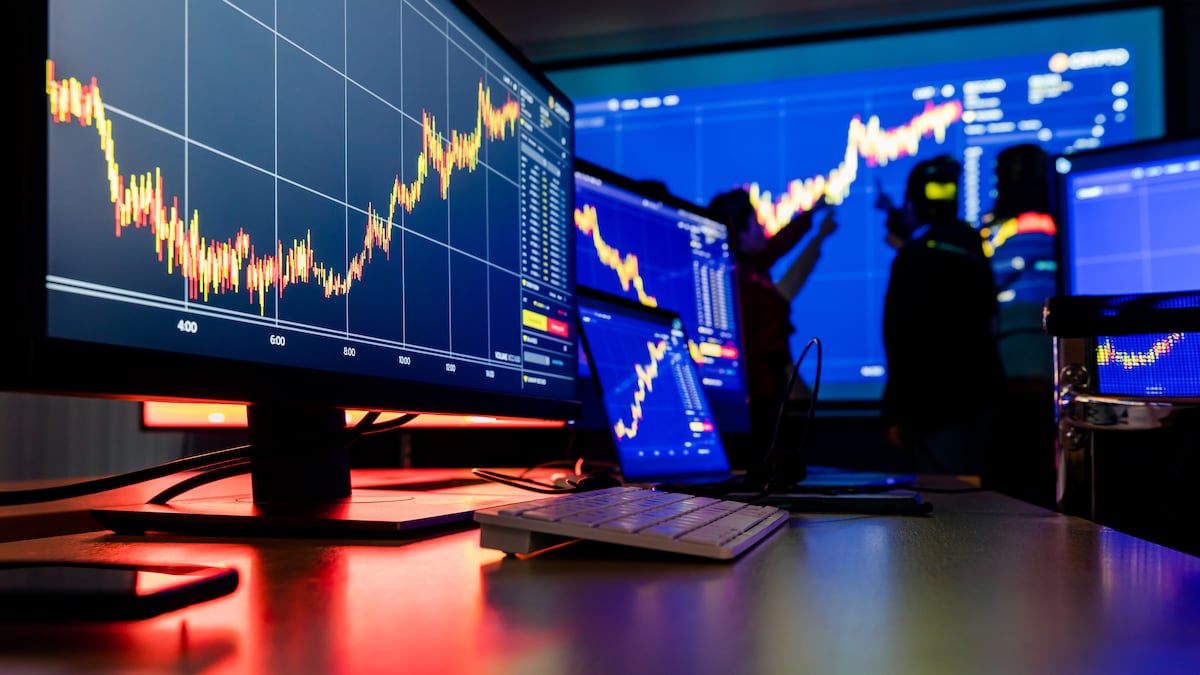- Crypto spot trading volumes have dropped to lows not seen since 2019.
- The bulk of crypto trading volume takes place on Binance and just seven other centralised exchanges.
- Tightening volatility paints an uncertain future, but signals suggest it could pick up.
- Bitcoin has been a bright spot.
Sentiment in crypto markets is in the doldrums after a blowout in 2022, characterised by lower volumes and a lack of liquidity.
Just how bad is it?
To help make sense of it all, here are three charts to explain where the industry is — and hint at what may happen next.
Spot trading volume at 2019 lows
Crypto spot trading volumes have persistently declined throughout 2023. Trading volume hit multi-year lows in May and then again in August.
Last month, centralised exchanges saw just $475 billion in trading volume, a decline of almost 8%, according to crypto research and analytics firm CCData. It was the lowest month for spot trading volume since March 2019, the firm said.
Daily volumes on centralised exchanges reached almost $6 billion on August 26th, which was the lowest since February 2019, CCData analysts said.
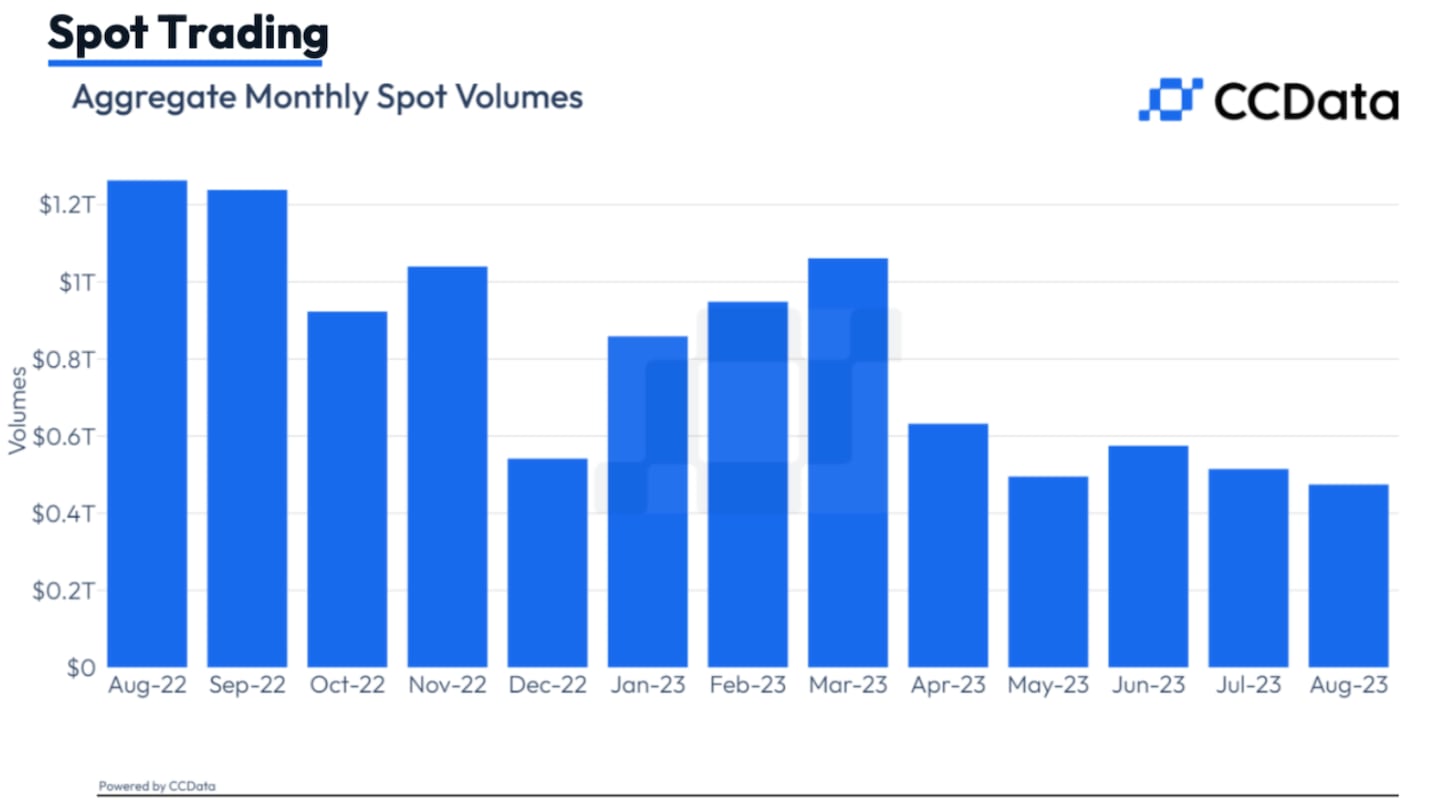
Crypto market is overly concentrated
As research firm Kaiko noted, the market is overly concentrated on just a few exchanges.
Eight centralised exchanges now control close to 90% of cumulative trade volume in the crypto markets, up from 84% in 2021, the firm said.
Most notable among the last few years’ progress is Binance’s commanding lead — which has nearly doubled to 64% of global trade volume.
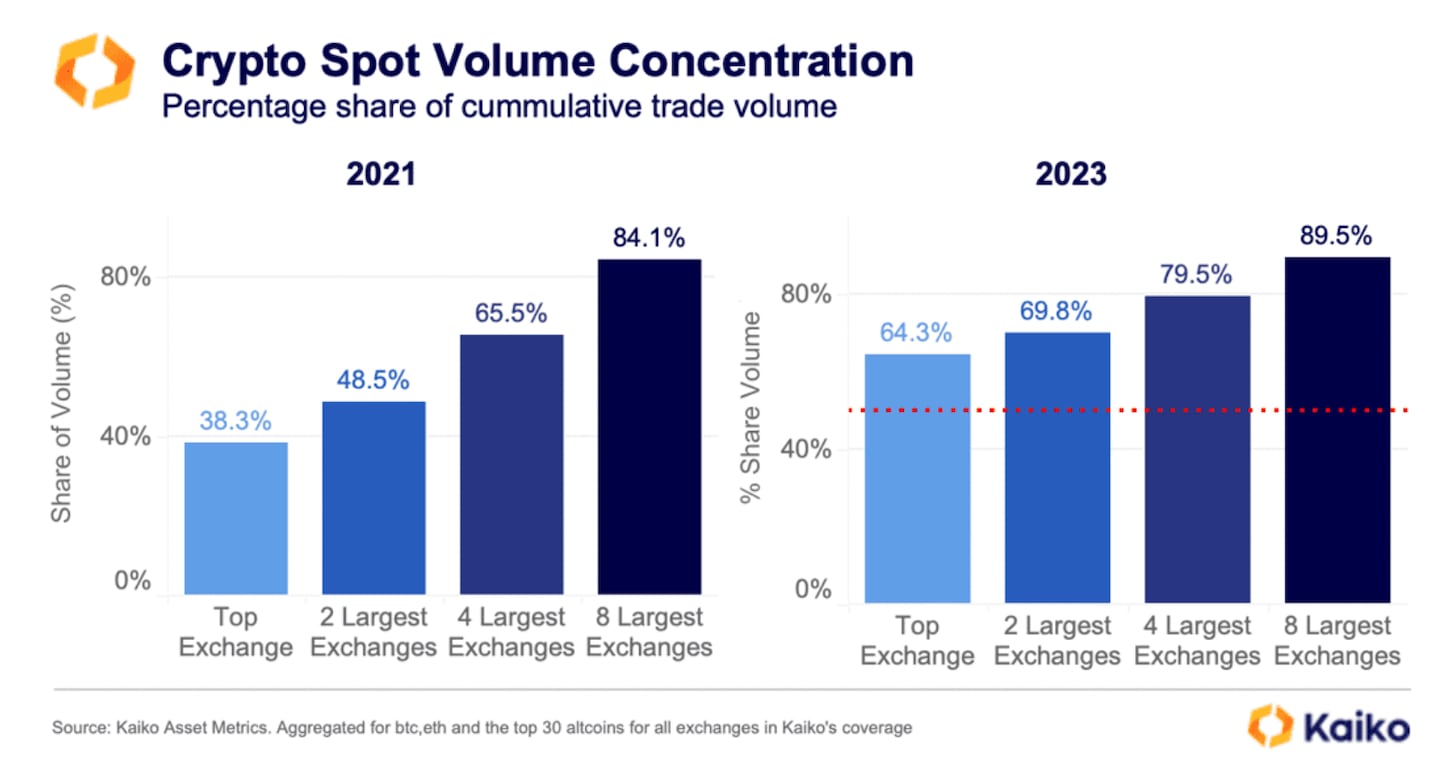
Commentators stressed the potential dangers of concentrated liquidity, which can result in single points of failure carving away huge swathes of liquidity, as was seen with FTX’s collapse in 2022.
Binance remains the largest venue for spot trading in crypto, recording $183 billion in volumes, CCData analysts said. However, they added, the exchange’s market share has declined for the sixth consecutive month, falling to 38% in August, its lowest market share since August 2022.
Volatility has decreased steadily since 2021
Despite the crypto market’s reputation for extreme volatility, the last three years have seen a steady decline — so fewer volatility spikes.
Crypto market swings are represented in the chart by the line marked Coincore, which is Coinbase’s crypto measure of volatility. The trend has been shifting downward, noted David Duong, head of institutional research at Coinbase.
More recently, he said, crypto volatility has even “approached convergence” with the Cboe volatility index, otherwise known as the VIX, he said.
The VIX, sometimes referred to as the “fear gauge,” is a measure of the expected volatility and investor sentiment. It tracks the S&P 500 and rises when there is uncertainty or fear in the financial markets.
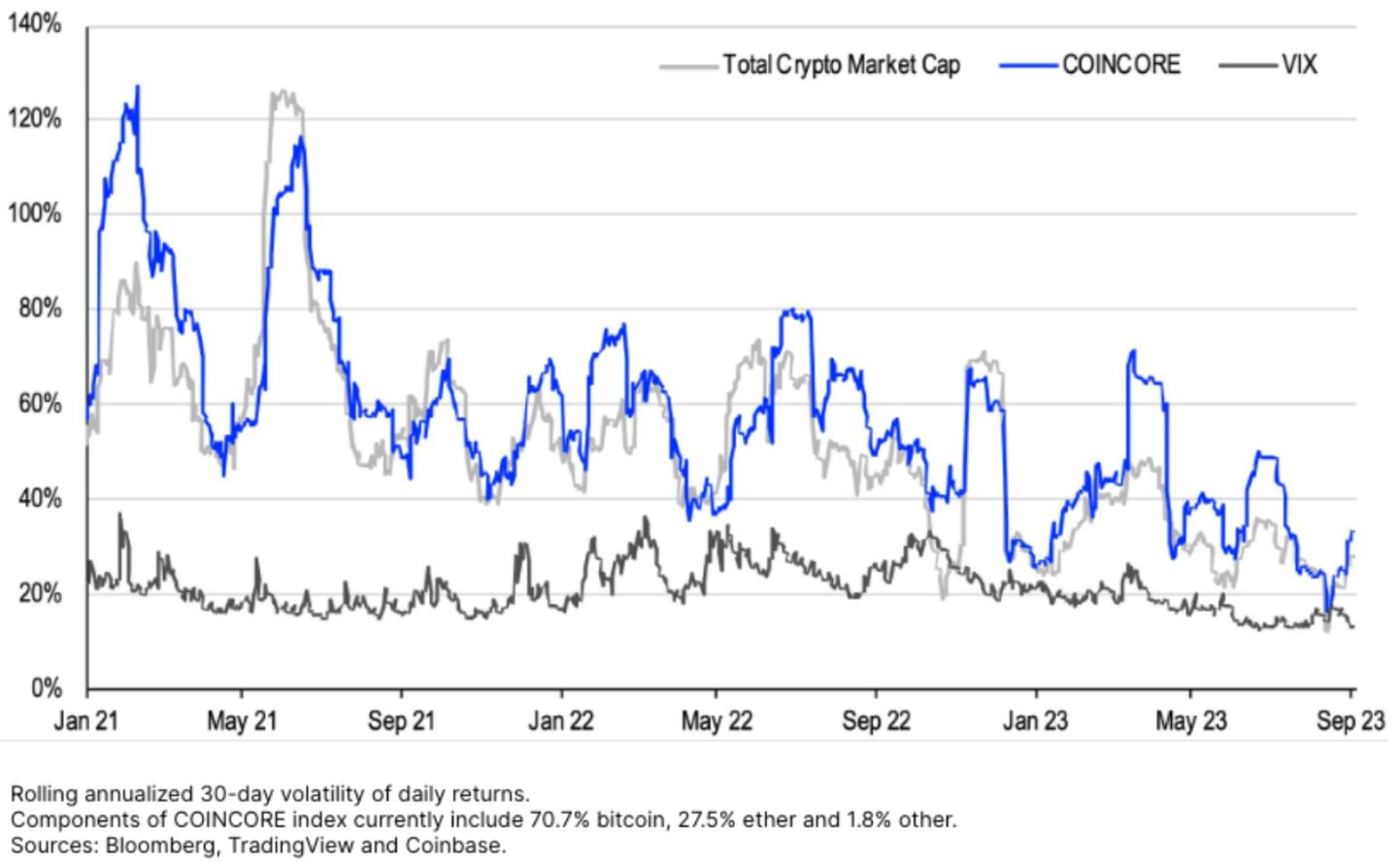
Last month Bitcoin volatility hit record lows days before prices cratered and investors suffered over $1 billion in liquidations on August 17.
There are signs of increased volatility ahead, according to a report on Tuesday from K33 Research, formerly Arcane. Volatility is widening compared to previous weeks, the firm said.
While volatile markets are dangerous and can result in higher losses, they can also offer higher returns to traders willing to accept the risk.Professional traders love volatility, as rocky markets offer better opportunities to exploit gaps in pricing.
Bitcoin bounce
Bitcoin is a bright spot in crypto markets. It’s up more than 50% year to date. And the global crypto market capitalisation of all coins has risen by nearly $200 billion to $1.1 trillion.
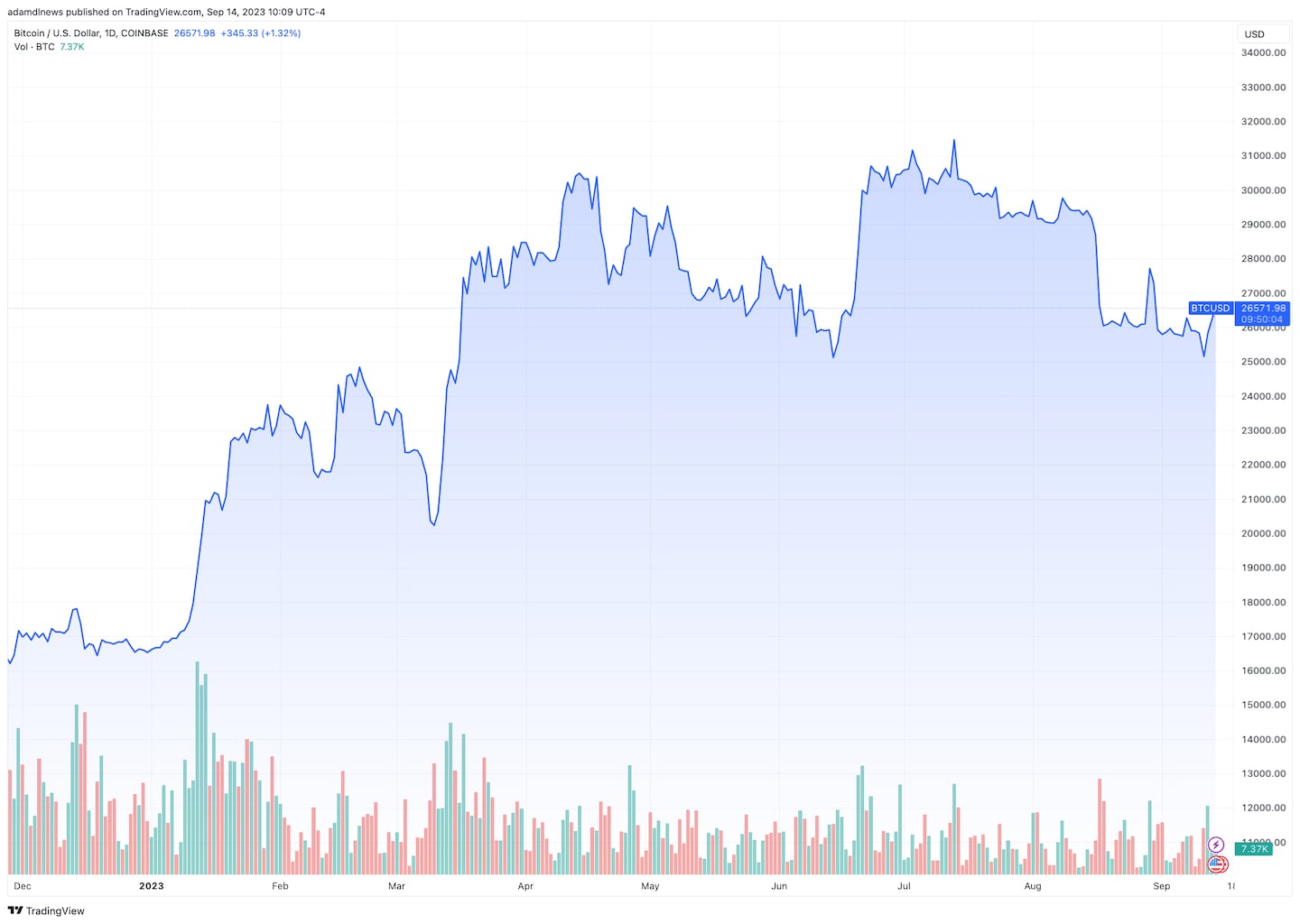
While it failed to buck the downward trend in trading volume — plummeting trading volumes are “reminiscent of the pre-bull run period” in 2019 and 2020, says James Butterfill at CoinShares — that’s from a very high bar.
Daily trading volume soared to about $14 and $11 billion, respectively, in 2021 and 2022. This year, the leading cryptocurrency by market capitalisation saw its daily trading volume average around $7 billion.
Leading crypto exchange Binance contributed to the decline in volumes following its decision in March of this year to end its no-fee promotion for traders.
The crypto exchange had been running a no-fee trading promotion on 13 spot Bitcoin trading pairs, which included the Bitcoin and Tether trading pair.
Tyler Pearson is a researcher at DL News. He is based out of Alberta, Canada. Got a hot tip? Reach out to him at ty@dlnews.com. Adam Morgan McCarthy is DL News’ London-based Markets Correspondent. Got a tip? Reach out at adam@dlnews.com.
